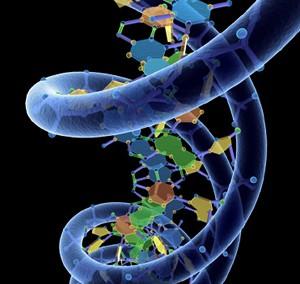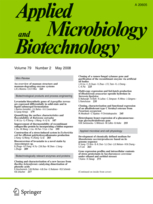导读:基因表达精确调控技术是代谢工程和合成生物学的核心技术之一,对优化目标产品合成途径的效率,提高人工合成细胞的生产能力起着至关重要的作用。传统的提高目标产品合成能力的策略是采用质粒过表达的方法对基因表达进行调控,然而这种方法有许多弊端。

基因表达精确调控技术是代谢工程和合成生物学的核心技术之一,对优化目标产品合成途径的效率,提高人工合成细胞的生产能力起着至关重要的作用。传统的提高目标产品合成能力的策略是采用质粒过表达的方法对基因表达进行调控,然而这种方法有许多弊端:1)需要添加IPTG和阿拉伯糖等昂贵的诱导剂来进行诱导;2)质粒的维持对宿主细胞会造成很大的代谢负荷;3)很多质粒的遗传稳定性不好;4)很多化合物的生产需要在细胞中构建出一条复杂的合成途径,因此需要引入包含多个基因的长DNA片段,而大部分质粒都比较难携带长DNA片段;5)为了使微生物合成目标产品的代谢流达到最大,必须精确控制合成途径中各个基因的表达强度,使它们达到协同表达的状态。
目前广泛使用的诱导型启动子其强度都是固定的,不能满足精确调控基因表达强度的需求。通过使用具有不同表达强度的人工调控元件,直接在染色体上对基因表达进行精确调控,可以很好地解决上述质粒过表达的问题。
中国科学院天津工业生物技术研究所张学礼研究员领导的微生物代谢工程研究组通过Red重组技术,在大肠杆菌的染色体上分别构建了启动子、信使RNA稳定区和核糖体结合位点的标准化调控元件库,并精确定量了文库中每个元件的强度。研究人员最终获得一个包含400个调控元件的标准化数据库,元件的强度差异达到4个数量级。在此基础上,他们开发了一步法基因表达精确调控技术,可以使用一对通用引物,快速高效地将待调控的基因表达替换为各种强度。该研究已经申请了一项中国专利,相关论文在线发表于Appl. Microbiol. Biotechnol.杂志。
张学礼研究组使用该技术,优化了非PTS葡萄糖转运途径。通过对galP和glk的基因表达的组合精确调控,筛选出一个最佳的调控强度组合,使大肠杆菌的生长速率提高了4倍,葡萄糖消耗速率提高了10倍,并有效地提高了丁二酸合成关键前体磷酸烯醇式丙酮酸(PEP)的供给,为丁二酸合成途径的优化奠定了基础。

Combinatorial modulation of galP and glk gene expression for improved alternative glucose utilization
Jiao Lu, Jinlei Tang, Yi Liu, Xinna Zhu, Tongcun Zhang and Xueli Zhang
Phosphoenolpyruvate (PEP) is an important precursor for anaerobic production of succinate and malate. Although inactivating PEP/carbohydrate phosphotransferase systems (PTS) could increase PEP supply, the resulting strain had a low glucose utilization rate. In order to improve anaerobic glucose utilization rate for efficient production of succinate and malate, combinatorial modulation of galactose permease (galP) and glucokinase (glk) gene expression was carried out in chromosome of an Escherichia coli strain with inactivated PTS. Libraries of artificial regulatory parts, including promoter and messenger RNA stabilizing region (mRS), were firstly constructed in front of β-galactosidase gene (lacZ) in E. coli chromosome through λ-Red recombination. Most regulatory parts selected from mRS library had constitutive strengths under different cultivation conditions. A convenient one-step recombination method was then used to modulate galP and glk gene expression with different regulatory parts. Glucose utilization rates of strains modulated with either galP or glk all increased, and the rates had a positive relation with expression strength of both genes. Combinatorial modulation had a synergistic effect on glucose utilization rate. The highest rate (1.64 g/L h) was tenfold higher than PTS− strain and 39% higher than the wild-type E. coli. These modulated strains could be used for efficient anaerobic production of succinate and malate.








